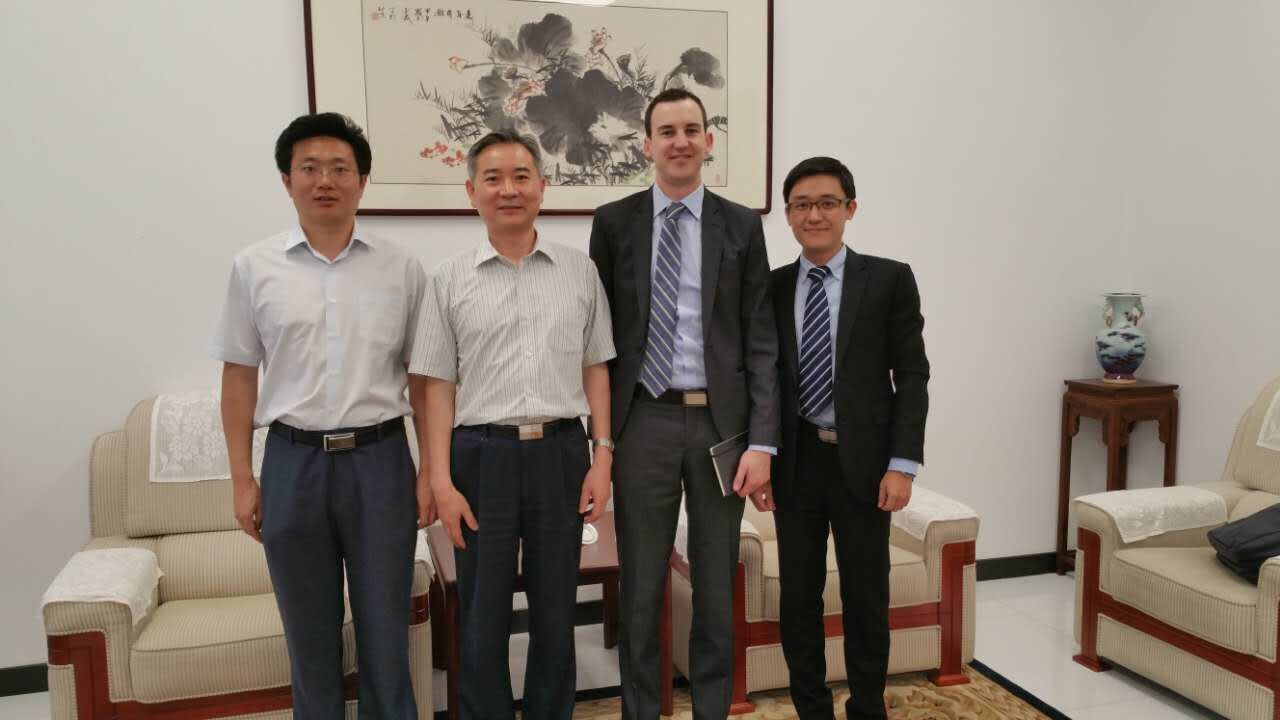On the morning of July 3, 2015, Mr. Xu Hongcai, Director of the Economic Research Department of CCIEE, met with David Warner, Secondary (Economic) Secretary at the Australian Embassy in China and Li Lianqing, Senior Research and Program Officer. Also present at the meeting were, among others, Zhang Huanbo from the Economic Research Department and Liu Juan from the Department of External Affairs.

As pointed out by Mr. Xu Hongcai, China’s economic growth was expected to moderately fall by 0.2 percent over the previous three months to around 6.8 percent in the second quarter. Judged from Li keqiang Index, PPI, Manufacturing PMI and other indicators as well as the intensity of previous macro control and regulation policies, a bounce could be expected in the third quarter. As China is entering the economic “New Normal”, the government has formulated multi-pronged policies to ensure steady growth, make structural adjustments, advance reform, improve the standard of living and guard against risks. The economic structure and quality have been improved constantly. Now, China is the world's second-largest economy, and Australia the 12
th. The conclusion of the China-Australia Free Trade Agreement (FTA) will usher in considerable development opportunities for both countries. Against the backdrop of the implementation of the “One Belt and One Road” Initiative, the two nations will generate a “1+1>2” synergy. As explained by Mr. David Warner, China and Australia enjoy a close bilateral relationship, and the signing of the Agreement will imply a great opportunity for all sectors of Australia, especially dairy and agricultural products. Meanwhile, the enhanced trade and economic ties will lead to increasing needs for RMB-based settlement services and accelerated progresses in RMB internationalization. In the end, the two parties agreed to maintain close ties and intensify communication, so as to come up with more suggestions to deepen trade and economic cooperation.

